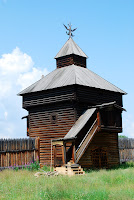Following the practice of the late Qing government and early warlords, the Chinese Republic relied on imports of foreign
arms in the 1920s and 1930s to modernize its armed forces. Purchases from firms
in Britain, France, Italy, and Germany introduced a motley group of armaments
into the Chinese arsenal.
As Britain and France had been the principal European
imperial powers that had sought concession after concession from China, there
existed mutual suspicions that created the conditions for a deepening
partnership between the Nationalist Chinese government and Germany that was
only ended in 1941 with Japanese insistence. After an Anglo-Japanese agreement to take control of its important concession of the Liaotung peninsula and its capital
Tsingtao during WWI, Germany sought to re-insert itself into East Asian
affairs.
Military advisers and favorable sales of military equipment became the
cornerstone of this rapprochement between two countries that had good cause to
resent the victors’ peace at the Treaty of Versailles. Sino-German cooperation
allowed Chiang Kai-shek to base his military modernization on the creation of
several German-trained and -armed divisions. This was to be the Republic’s “New
Model Army” that would carry the burden of showcasing a modern China.
These German-trained divisions formed the core of the forces that Chiang Kai-Shek committed to fight in Shanghai in 1937. They acquitted themselves well through dogged resistance although the nature of urban warfare did not allow them to use their dearly-bought mechanization to advantage. Eventually these divisions were ground down by attrition and lost the greater part of their numbers and (German) equipment.
Building some of these German-trained and -equipped KMT Chinese Nationalist troops is another one of my many languishing projects. I hope to get it started up again before too long.
The following infantry figures are made from 1/72 Caesar Miniatures, 1/72 HäT Miniatures (Ottoman infantry with heads swapped), and 20mm Foundry.




























































